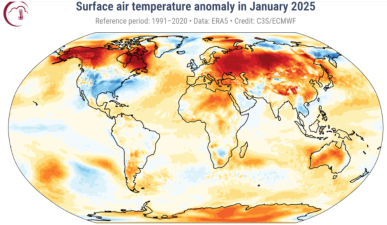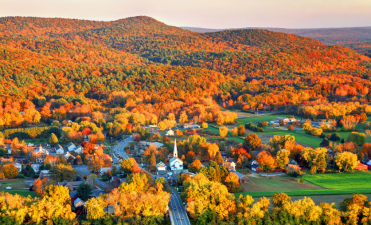Winter Ahead: Policy Shifts & Global Forecasts 2025
"Early Frost Descent freezes cattle to death; late Frost Descent forces light clothing." This ancient proverb has long been used by farmers and weather enthusiasts as a reference for predicting winter temperatures. As 2025 approaches, people are beginning to wonder: Will the winter be unusually cold this year?
The Climate Logic Behind the Proverb
"Early Frost Descent freezes cattle to death; late Frost Descent forces light clothing." This proverb is actually a simple summary of climate change based on ancient observations of natural phenomena. Frost Descent is one of the 24 solar terms, marking the transition from autumn to winter. The "early" and "late" in the proverb refer to the timing of Frost Descent relative to the annual average. If Frost Descent arrives early, it indicates frequent cold air activity and a rapid drop in temperature, potentially leading to a colder winter. Conversely, if Frost Descent arrives late, it may indicate a relatively mild winter.
However, this prediction method lacks scientific basis, as climate change is influenced by a variety of complex factors, including but not limited to atmospheric circulation, ocean temperatures, and solar radiation. Therefore, predicting winter temperatures for a specific year based solely on this proverb is clearly inaccurate.
Comparison of Historical Climate Data

To predict the severity of winter 2025, we can refer to historical climate data. However, historical data only provides information about past weather conditions and cannot directly predict the future. However, statistical analysis of climate data from decades or even centuries past can reveal patterns and trends in climate change.
For example, global warming is an undeniable fact, leading to more frequent extreme weather events, including heat waves, droughts, floods, and cold snaps. However, global warming does not mean every winter will be warmer. On the contrary, due to extreme weather events caused by climate change, some winters may be unusually cold.
In addition, it is important to consider specific geographical regions. Places like Qinghai have a plateau climate, where climate change is influenced by a variety of factors, including topography, altitude, and atmospheric circulation. Therefore, even if global warming is the general trend, winter temperatures in places like Qinghai may fluctuate.
Analysis of Environmental Influencing Factors
When predicting the severity of winter 2025, environmental factors must be considered. The most important of these are atmospheric circulation and ocean temperatures. Atmospheric circulation is a key factor influencing global climate change, determining the direction and intensity of cold and warm air flows. If there are abnormal atmospheric circulation events in the winter of 2025, such as a weakening of the Arctic Oscillation or a decrease in Arctic sea ice, cold air could more easily move southward to impact mid-latitudes, leading to lower winter temperatures.
Ocean temperatures are also a significant factor influencing climate change. Anomalies in the North Pacific and Atlantic Oceans, in particular, can have profound impacts on global climate. For example, La Niña (colder-than-normal waters in the central and eastern equatorial Pacific) typically leads to lower global temperatures, while El Niño (warmer-than-normal waters in the central and eastern equatorial Pacific) can lead to higher global temperatures. Therefore, ocean temperatures in the winter of 2025 will have a significant impact on temperatures.
Uncertainty in Meteorological Forecasts

Although meteorologists use advanced computer models and observational data to predict future climate, significant uncertainty remains. This is because climate change is influenced by multiple factors, which interact and influence each other, forming a complex system. Furthermore, human activities (such as greenhouse gas emissions) may also have a significant impact on climate change. The complexity and uncertainty of human activities further complicate climate predictions.
Therefore, we cannot provide a definitive prediction of how cold the winter of 2025 will be. We can only say that, based on current meteorological data and model predictions, certain factors may contribute to a drop in winter temperatures, but the specific magnitude and scope of this drop remain highly uncertain.
Five Recommendations for Addressing Climate Change
Faced with the uncertainties brought about by climate change, we should take proactive measures. First, we should strengthen climate monitoring and early warning systems to improve the accuracy and timeliness of weather forecasts. Second, we should promote global emissions reduction efforts to reduce greenhouse gas emissions and slow the pace of climate change. Finally, we should strengthen infrastructure development and disaster prevention and mitigation capabilities to enhance society's ability to respond to extreme weather events.
In short, while the saying "early frost freezes cattle to death; late frost, wear light clothing" is poetic and philosophical, it cannot serve as a scientific basis for predicting future climate change. In the face of the challenges posed by climate change, we need to remain rational and calm, taking proactive measures to address and adapt to its various impacts.


